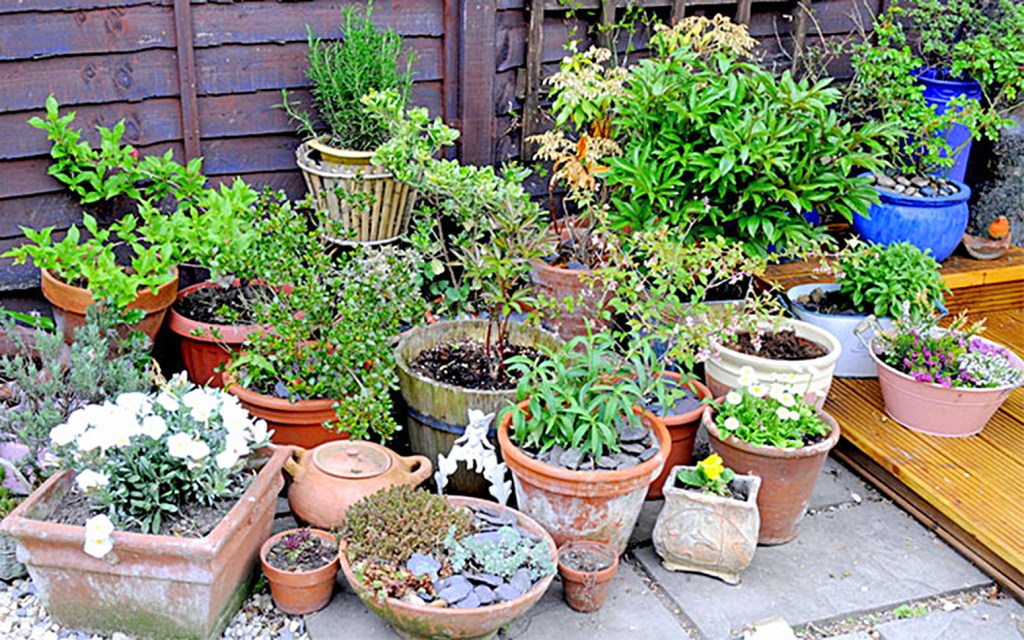ONE GARDENER TO ANOTHER: Garden containers
Published 6:45 am Monday, August 6, 2018

- Garden containers
When someone is offering garden pots in good shape that they no longer need, or there is a good deal on them at a yard sale, I am the first in line. I’m a bit of a hoarder when it comes to garden containers.
I use containers for a variety of reasons. I have a trailing patio tomato plant and basil in containers right outside the kitchen door. I have ferns on my shaded patio, a gardenia at the bottom of the stairs that is climbing up the railing, annuals hanging from shepherd’s hooks, and a few ‘experiments’ all in various pots.
Containers come in a variety of sizes, colors, prices and materials, and each one has advantages and disadvantages. The following are some of the pros and cons associated with each type:
Terracotta
Terracotta is a type of clay that has a warm, rustic look. It is porous so it breathes and wicks water away from the soil, which can be an advantage or disadvantage depending on the plant and your watering habits. If you are a forgetful or occasional waterer, you might want to forget terracotta, especially if the container is in full sun. However, it is a good choice if you have a sturdy or low water plant, if the container is used for a shade plant, or if you frequently water.
Terracotta pots tend to get white stains due to salts in water and soil, but they can easily be cleaned. Terracotta is heavy when filled. Although it can crack or chip, it is sturdier but more expensive than its lookalike raw, unfired clay cousin.
Wood
Wooden boxes or barrels are light weight, fairly inexpensive and can have a certain rustic charm. They can be painted or stained to match any décor.
Unless they are made of rot-resistant wood, which would be more expensive, they are one of the least durable materials. They are susceptible not only to rot and warping but also to pests. Most wood, unless cleaned and treated regularly, will last only a season or two.
Metal
Metal containers are lightweight and sturdy. Galvanized containers are essentially maintenance free. They can be painted with durable finishes that will last for long periods of time. If properly cared for, metal containers can be left out year-round.
The downside to metal containers, from a plant standpoint, is they get hot, which can heat soil and harm plants. They are a good choice as a cachepot, a pot with a container placed inside. Metal will eventually rust, some faster than others, especially if creased or nicked. Also, depending on quality, metal pots can be an expensive choice. Metal containers, such as galvanized tubs, generally do not come with drainage holes. These can easily be drilled in the bottom of the container, however, this creates a place for rust to start.
Plastic
Plastic pots come in a variety of colors and shapes. It is a good material for hanging baskets and window boxes. They don’t chip, flake or rust. Some lesser-quality pots may crack over time, but otherwise they are one of the more durable choices. They can be left out all year and they retain water well. Plastic pots can last for years, are lightweight and one of the less expensive choices.
The cons of plastic are few, but there are a couple of points to consider. Plastic pots will fade relatively quickly when placed in the sun. As mentioned, thinner and cheaper pots will crack over time and when exposed to colder temperatures.
Resin vs. concrete
Resin is a composite material that can be made to look like concrete or natural materials; at times indistinguishable by sight alone. Resin can be molded to mirror multiple finishes and textures, and embossed with various patterns. It is extremely light weight and is considerably less expensive than concrete.
The weight of concrete can support top-heavy plants that would otherwise topple over in a resin container. Both can withstand the changes in climate.
There is a pot for every plant. Until next week, happy gardening.
— Irland, a member of the Limestone County Master Gardeners, can be reached at kippirland@hotmail.com. For more information on the Limestone County Master Gardeners, visit http://mg.aces.edu/limestone.





